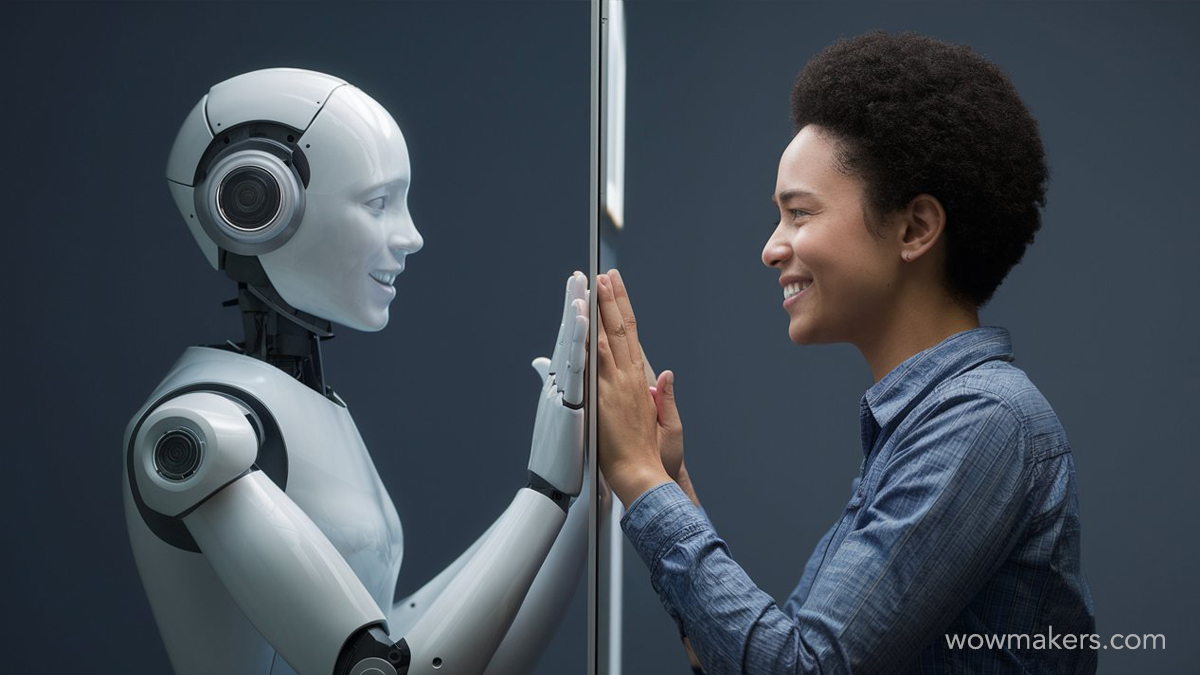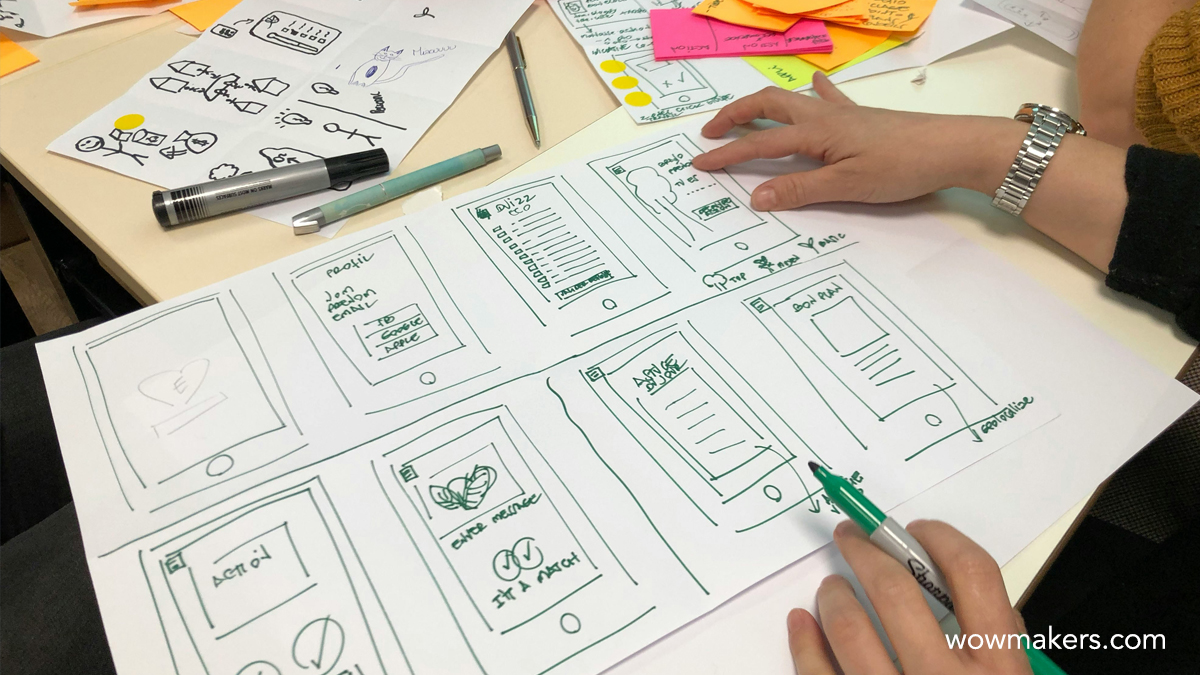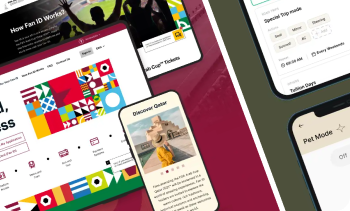The convergence of User Experience (UX) and Artificial Intelligence (AI) has sparked a revolution in how we interact with and perceive digital products. This comprehensive article explores the profound impact of the intersection between UX and AI, uncovering the latest possibilities, features, and rethinking the future of UX Design in the age of AI.
I. The Rise of AI in UX Design

1. Understanding AI in UX
AI’s integration into UX design has enabled the creation of highly intuitive, adaptive, and personalized user experiences. Advanced AI techniques such as machine learning (ML), natural language processing (NLP), and computer vision have transformed static interfaces into dynamic, user-centric environments. These technologies allow for the continuous learning and adaptation of user interfaces, ensuring that user experiences are always optimized and relevant.
AI’s role in UX goes beyond simple automation. It involves understanding user behavior on a deeper level and predicting future actions to preemptively meet user needs. This anticipatory design approach is a game-changer in creating more fluid and satisfying user experiences. By leveraging AI, designers can craft experiences that feel tailor-made for each user, enhancing engagement and satisfaction.
2. The Evolution of UX Design
Early UX design relied heavily on manual processes and heuristic evaluations. Designers would create user personas, conduct usability tests, and iteratively improve designs based on feedback. While effective, this approach was time-consuming and limited in scope. The introduction of AI into UX design has automated many of these processes, allowing for more extensive and rapid iterations.
For example, AI can analyze large datasets to identify patterns and insights that would be impossible for humans to discern manually. This enables designers to create more accurate user personas and tailor experiences to meet the specific needs of different user groups. Additionally, AI-driven tools can automate routine tasks such as wireframing and prototyping, freeing designers to focus on more strategic aspects of UX design.
II. Conversational Interfaces: Redefining User Interaction

1. Human-Like Interaction
Natural Language Processing (NLP) has fundamentally changed how users interact with digital products. By enabling machines to understand and respond to human language, NLP facilitates more natural and engaging interactions. Advanced users expect conversational interfaces that understand context, intent, and provide accurate responses.
NLP allows for the development of sophisticated chatbots and virtual assistants that can handle complex queries and provide meaningful interactions. These systems can understand nuances in language, such as sarcasm or sentiment, and respond appropriately. This creates a more human-like interaction, enhancing user satisfaction and engagement.
In enterprise settings, NLP can streamline customer service operations by handling routine inquiries and tasks, allowing human agents to focus on more complex issues. This not only improves efficiency but also ensures that users receive prompt and accurate responses to their queries.
2. Virtual Assistants and Chatbots
AI-powered virtual assistants and chatbots enhance user experiences by offering instant support, personalized recommendations, and streamlined interactions. These tools use advanced algorithms to predict user needs and deliver contextually relevant assistance, creating a more efficient and satisfying user journey.
Virtual assistants and chatbots are now integral parts of many digital experiences. They are used in a variety of industries, from e-commerce to healthcare, to provide users with immediate assistance and personalized interactions. These systems can handle a wide range of tasks, from answering frequently asked questions to managing complex workflows.
For example, in the healthcare industry, AI-powered chatbots can assist patients by providing information about symptoms, scheduling appointments, and even offering mental health support. In e-commerce, virtual assistants can guide users through the purchasing process, recommend products based on browsing history, and handle customer service inquiries.
III. Personalization and Contextual Adaptation

1. Hyper Personalized Content Generation at Scale
AI-driven personalization involves generating content tailored to individual user preferences, historical data, and contextual insights. This capability fosters deeper engagement and more meaningful user experiences by anticipating user needs and delivering bespoke content.
Personalization is at the heart of many successful digital products. AI enables the creation of highly personalized experiences by analyzing user data and behavior to deliver content that is relevant and engaging. This goes beyond simple recommendations; it involves creating a unique experience for each user.
For instance, streaming services like Netflix use AI to recommend shows and movies based on viewing history and preferences. This creates a more engaging experience by ensuring that users are always presented with content that matches their interests. Similarly, news platforms use AI to curate articles and stories that are relevant to each reader, enhancing engagement and satisfaction.
2. Contextual Adaptation
Contextual adaptation refers to AI’s ability to dynamically adjust user interfaces based on specific contexts, such as user behavior, device capabilities, and environmental factors. This results in interfaces that are not only intuitive but also responsive to real-time changes in user context, enhancing usability and satisfaction.
Contextual adaptation involves understanding the user’s environment and adjusting the interface accordingly. This can include factors such as the user’s location, time of day, device being used, and even the user’s emotional state. By taking these factors into account, AI can create more relevant and engaging experiences.
For example, a navigation app might adjust its interface based on whether the user is walking, driving, or using public transportation. It might offer different routes, information, and interaction methods based on the mode of travel. Similarly, a productivity app might change its interface based on whether the user is in a meeting, at their desk, or on the go, providing the most relevant tools and information for each context.
3. Dynamic Interface Generation
AI can dynamically generate interfaces in real-time, adapting the design and layout to meet the specific needs and preferences of individual users. This approach can significantly enhance user engagement and satisfaction by providing a more personalized and intuitive interaction experience.
Dynamic interface generation involves using AI to create and modify user interfaces on the fly, based on real-time data and user interactions. This allows for a more fluid and responsive user experience, as the interface adapts to meet the user’s needs at the moment.
For example, an e-commerce platform might use AI to rearrange product displays based on the user’s browsing history and preferences. This can make it easier for users to find products they are interested in, enhancing the shopping experience. Similarly, a healthcare app might use AI to create personalized dashboards that provide relevant information and recommendations based on the user’s health data and activity.

Embrace Good UX and see a skyrocketing profit.
Talk to a UX expert
IV. Data-Driven Decision Making

1. User Behavior Analysis
AI excels at analyzing vast amounts of user behavior data to provide actionable insights. These insights enable product managers and UX designers to make informed, data-driven decisions that optimize user experiences. By understanding user patterns and preferences, AI helps in refining design elements and improving overall user satisfaction.
User behavior analysis involves collecting and analyzing data on how users interact with digital products. This can include metrics such as click rates, session duration, and interaction patterns. AI can process this data to identify trends and insights that inform design decisions.
For instance, AI can analyze user interactions to identify pain points and areas for improvement. This can help designers create more user-friendly interfaces and enhance overall user satisfaction. Additionally, AI can segment users based on behavior and preferences, allowing for more targeted and effective design changes.
2. A/B Testing and Optimization
AI-driven A/B testing automates the process of evaluating different design variations, significantly accelerating the optimization cycle. Advanced algorithms can test numerous variables simultaneously, providing rapid feedback and insights that enhance design effectiveness and conversion rates.
A/B testing involves comparing two or more versions of a design to determine which performs better. Traditional A/B testing can be time-consuming and limited in scope, as it typically involves testing one variable at a time. AI-driven A/B testing, on the other hand, can test multiple variables simultaneously, providing faster and more comprehensive results.
For example, an e-commerce site might use AI to test different layouts, color schemes, and call-to-action buttons to determine which combination yields the highest conversion rates. By automating this process, AI can provide rapid insights and enable continuous optimization of the user experience.
3. Predictive Analytics
Predictive analytics involves using AI to analyze historical data and make predictions about future user behavior. This can help UX designers and product managers anticipate user needs and design experiences that are proactive rather than reactive.
Predictive analytics can identify patterns and trends in user behavior, allowing for more accurate forecasting and planning. For instance, AI can predict which features users are likely to use most frequently, allowing designers to prioritize those features in the interface. This can enhance user satisfaction by ensuring that the most relevant and useful features are easily accessible.
Additionally, predictive analytics can help identify potential issues before they arise, enabling proactive measures to prevent user frustration and enhance the overall experience.
V. Ethical Considerations and User Privacy

1. Bias and Fairness
The integration of AI in UX design necessitates a rigorous approach to addressing ethical considerations, particularly bias and fairness. AI systems must be designed and trained to ensure equitable user experiences, avoiding the perpetuation of biases present in training data. This involves continuous monitoring and refinement of algorithms to uphold ethical standards.
Bias in AI can result in unfair or discriminatory outcomes, which can negatively impact user experiences and trust. Addressing bias involves ensuring that training data is representative and diverse, and that algorithms are regularly tested and refined to mitigate any biases that emerge.
For example, an AI-powered hiring tool must be carefully designed to avoid biases that could disadvantage certain groups of candidates. This involves using diverse training data, implementing bias detection and correction mechanisms, and continuously monitoring the system to ensure fairness.
2. Privacy and Security
Protecting user privacy in AI-driven UX design is paramount. This involves transparent data usage policies, robust security measures, and user consent protocols. By prioritizing user privacy, designers can build trust and ensure the responsible use of AI technologies.
User privacy is a critical concern in the age of AI, as the technology relies on vast amounts of data to function effectively. Ensuring privacy involves implementing strong data protection measures, such as encryption and anonymization, and being transparent about how user data is collected and used.
For instance, an AI-driven healthcare app must ensure that sensitive health data is securely stored and transmitted, and that users are fully informed about how their data will be used. This builds trust and ensures compliance with regulations such as GDPR and HIPAA.
3. Transparency in AI Decisions
Creating transparent AI-driven interfaces involves explaining AI’s decisions and actions to users in an understandable manner. This transparency is crucial for building trust and ensuring that users feel comfortable with AI’s role in shaping their experience. Designers must find ways to effectively communicate the workings of AI without overwhelming users with technical details.
Transparency in AI involves providing users with clear explanations of how AI makes decisions and why certain actions are taken. This can help build trust and ensure that users feel comfortable with the technology.
For example, a recommendation system might include explanations of why certain products are recommended, based on the user’s browsing history and preferences. This can help users understand the logic behind the recommendations and feel more confident in the system’s accuracy and relevance.
VI. The Future of UX Design in the AI Era

1. Collaboration between AI and UX Professionals
Maximizing the potential of AI in UX design requires close collaboration between AI systems and human designers. This synergy combines the strengths of both domains, fostering innovative solutions that deliver exceptional user experiences. Collaborative efforts can bridge the gap between technical capabilities and user-centric design principles.
Collaboration between AI and UX professionals involves leveraging the strengths of both fields to create more effective and innovative designs. AI can provide data-driven insights and automate routine tasks, while human designers bring creativity, empathy, and a deep understanding of user needs.
For example, a UX designer might work with a data scientist to analyze user behavior data and identify opportunities for improvement. The designer can then use these insights to create more effective and user-friendly interfaces, while the data scientist ensures that the AI systems are continuously learning and improving.
2. Emerging Trends and Challenges
As AI continues to advance, several emerging trends and challenges will shape the future of UX design. Trends such as emotion detection and augmented reality are set to redefine user interactions. However, challenges like trust-building and responsible AI practices must be addressed to ensure sustainable and user-centered advancements.
Emerging trends in AI-driven UX design include the use of emotion detection to create more empathetic and responsive interfaces, and the integration of augmented reality (AR) to provide immersive and interactive experiences. These technologies have the potential to significantly enhance user engagement and satisfaction.
For example, emotion detection can be used to create interfaces that respond to the user’s emotional state, providing more personalized and supportive interactions. An AR application might use AI to provide real-time information and assistance, creating a more engaging and immersive experience.
However, these advancements also bring challenges. Trust-building is essential to ensure that users feel confident in the technology and are willing to share their data. Additionally, responsible AI practices must be implemented to ensure that the technology is used ethically and that user privacy and security are protected.
3. Continuous Learning and Adaptation
The integration of AI in UX design necessitates a commitment to continuous learning and adaptation. As AI technologies evolve, UX/UI designers and product owners must stay updated with the latest advancements and refine their skills accordingly. Professional development and ongoing education are crucial to maintaining a competitive edge in the rapidly changing landscape of AI-driven UX design.
Continuous learning involves staying abreast of the latest developments in AI and UX design, as well as understanding the broader implications of these technologies. This includes attending conferences, participating in workshops, and engaging with the AI and UX communities to share knowledge and insights.
Additionally, organizations must invest in training and development programs to ensure that their teams are equipped with the necessary skills to leverage AI effectively. This can help create a culture of innovation and continuous improvement, enabling organizations to stay ahead of the curve in AI-driven UX design.


We welcome you to visit our portfolio and see what we have done.
Check Our Portfolio
Conclusion

The era of AI is revolutionizing UX design, transforming user interactions with digital products. This article has explored AI’s impact on UX, including conversational interfaces, personalization, contextual adaptation, data-driven decision making, ethical considerations, and future trends. By leveraging AI responsibly and collaboratively, UX professionals, product managers, and digital entrepreneurs can create exceptional and immersive user experiences. Embracing the power of AI while adhering to ethical design practices will unlock unparalleled opportunities to innovate and enhance user satisfaction in the AI era.









